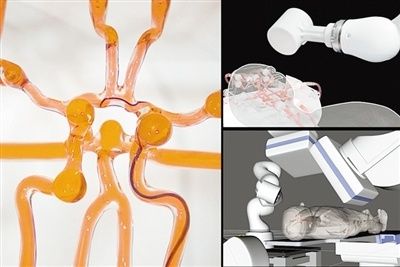Original Title: New Robotic System Helps Surgeons Remotely Treat Stroke, Provides Endovascular Surgery to Patients During Critical Time Window

< p> With a modified joystick, a surgeon can control another hospital’s robotic arm to operate on a patient. Image credit: MIT
MIT engineers have developed a telerobotic system that could help surgeons treat stroke or aneurysm patients quickly and remotely Safely operate on patients within critical time windows and save patients’ lives. The results were published in the journal Science Robotics.
The robotic system, whose movements are controlled by magnets, is designed to remotely assist in endovascular interventions, an emergency procedure to treat strokes caused by blood clots. This intervention usually requires the surgeon to manually guide a thin wire into the clot to physically clear the blockage or deliver drugs to break it up.
One limitation of this type of surgery is that patients stationed in remote areas, often far from major medical facilities with neurovascular surgeons, are prone to miss the “golden hour” of post-stroke treatment.
The robotic system designed by the MIT team can be installed in small hospitals and guided remotely by trained surgeons at large medical centers. The system includes a medical-grade robotic arm with a magnet attached to its robotic wrist. Using a joystick and live imaging, the operator can adjust the direction of the magnet and manipulate the arm to guide the soft, thin magnetic wire through arteries and blood vessels.
The researchers installed a robotic arm and a life-size silicone blood vessel model in the lab. They put joysticks in the control room, along with monitors that show real-time video of the models. From there, the operator uses the joystick to remotely steer the medical wire through the blood vessel while watching the video.
The team trained a team of neurosurgeons to use the robotic system. After an hour of training, each surgeon was able to successfully operate the system, guiding medical leads through complex blood vessels that were difficult to navigate manually.
The team also used a robotic system to remove simulated clots in hard-to-reach areas of the model. They guided the wire through the blood vessel, around sharp corners and turns, to the area where the researchers simulated the clot. When they guided the guidewire to the clot, the surgeons used standard endovascular methods to thread the microcatheter along the wire into the clot site and successfully resected the clot. (Zhang Mengran)